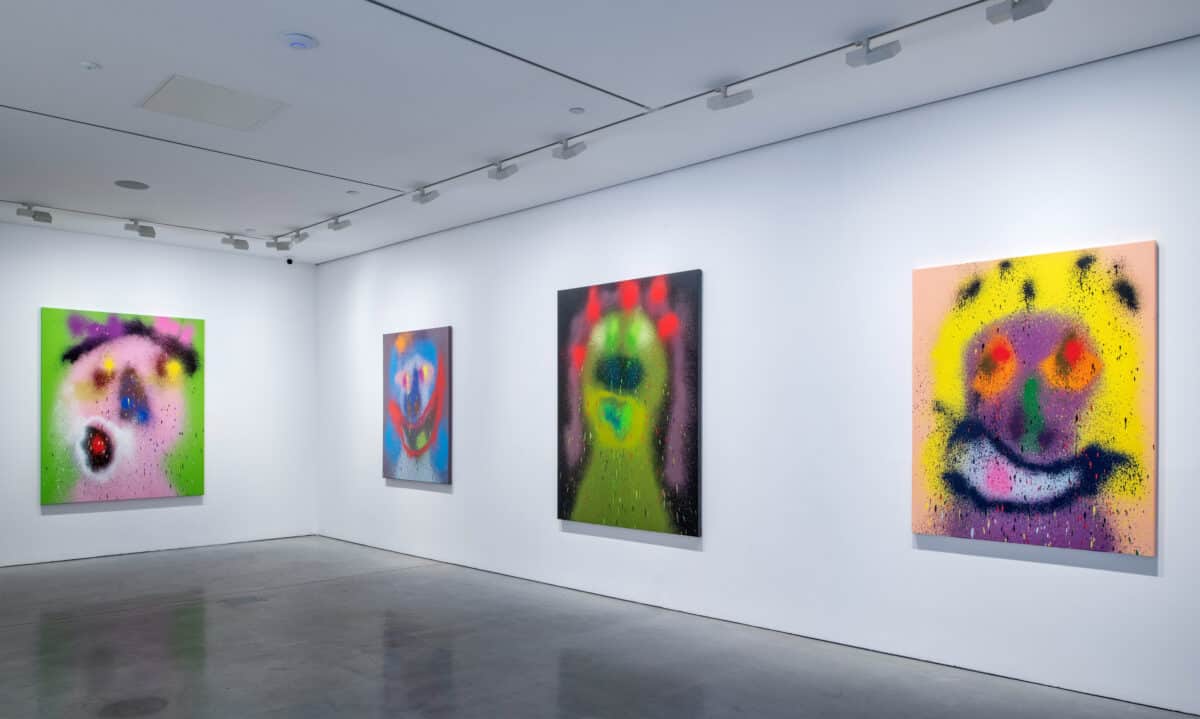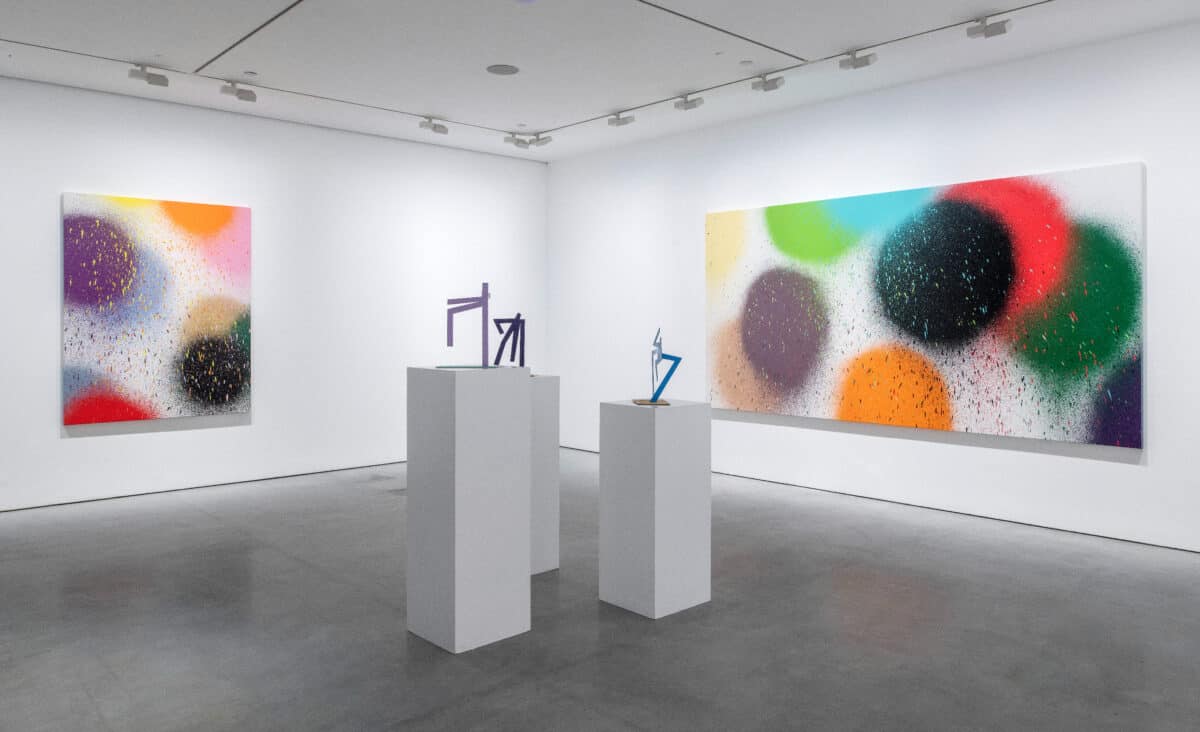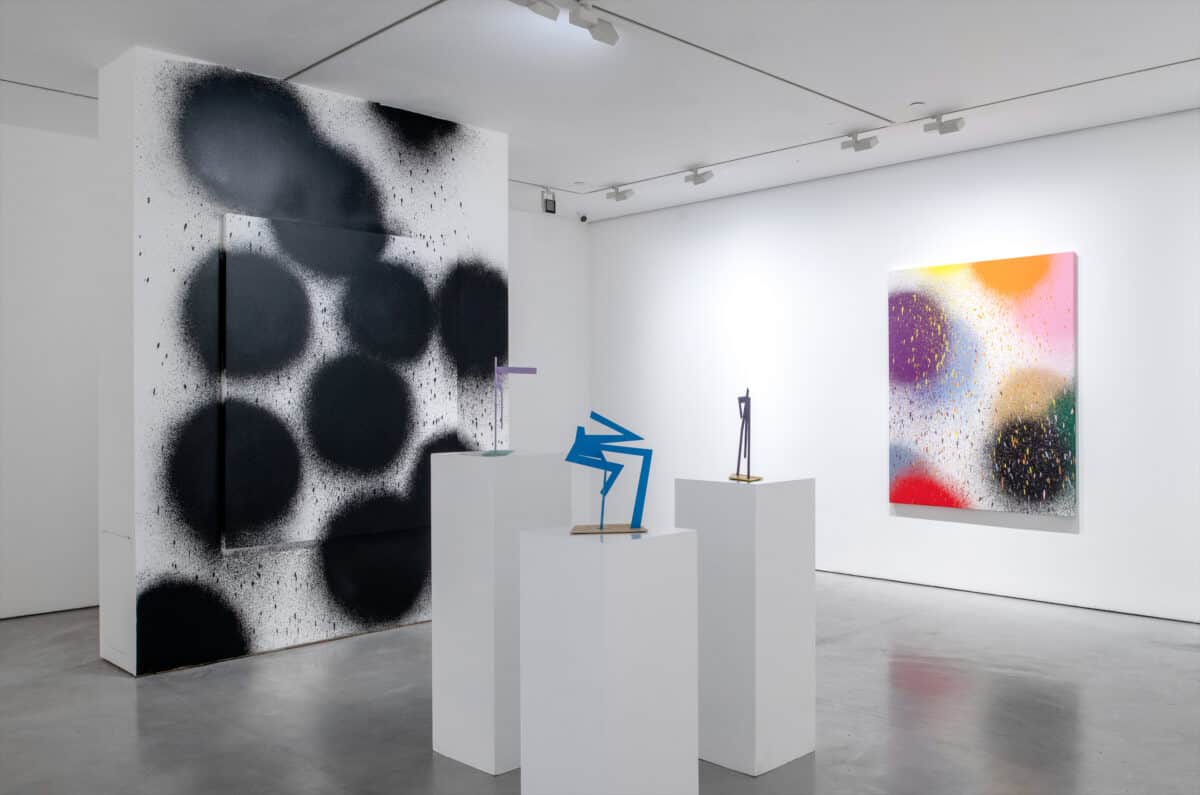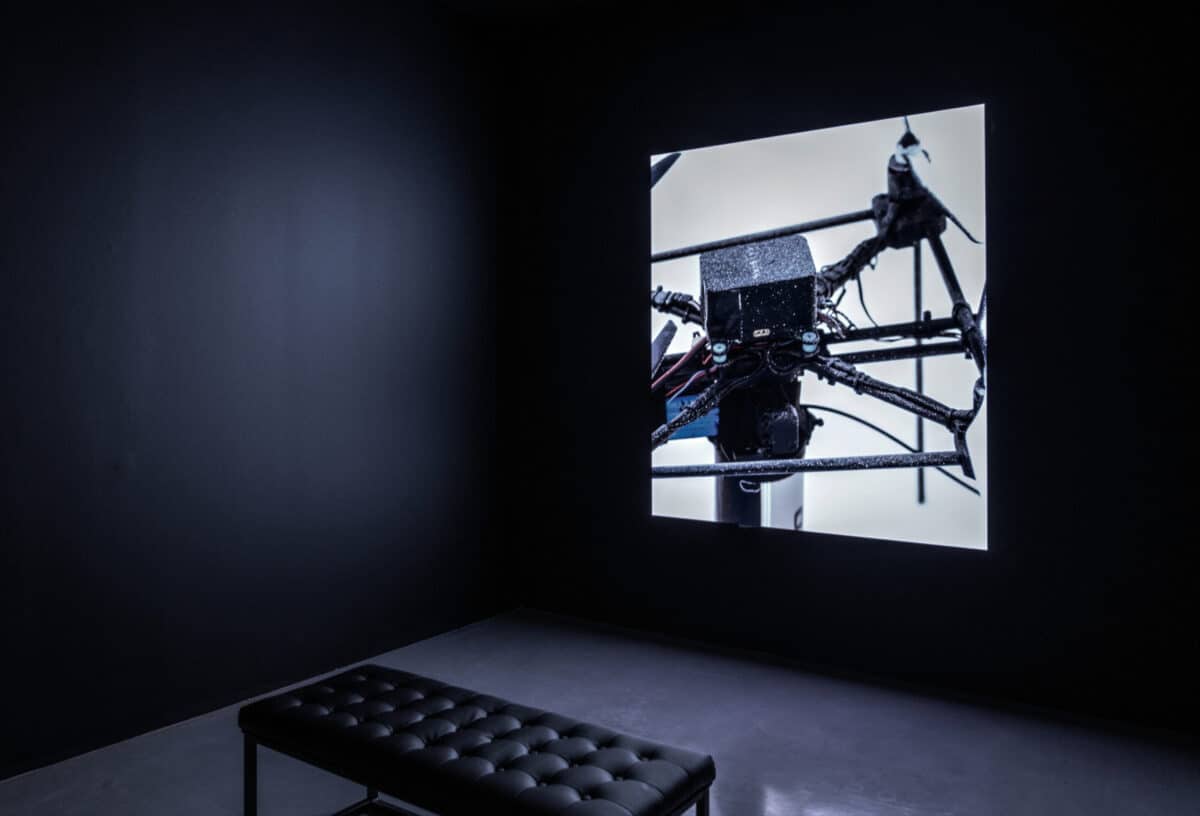KATSU is a San Francisco-based graffiti artist turned fine artist who works in an entirely unique, and freakishly modern manner through which he calls into question the very definition of the artist.

Over the past decade, he has developed a new way of painting using specialist software and custom-built autonomous and semi-autonomous drones which render directly onto the canvas. The resultant works are cheeky, playful, commanding and intriguing – once one realises the methods through which they are generated, poignant questions emerge regarding validity, provenance and authorship. If the drone made the work, does KATSU having made and programmed the drone mean it’s his piece? Moreover, what does this say about the future of art? In an art world where we have all come to know that many of the giants (I’m talking Jeff Koons and Damien Hirst) don’t always fabricate their work themselves, is this merely a logical extension of the status quo?
Beyond considerations of KATSU’s work in an art context, through its existence, we come face to face with that which is reframing our very existence – rapidly evolving technology, the primacy of digital media and the assent of machines. Issues emerge in relation to the precarity of digital privacy, along with a sense of pervasive anxiety provoked by technologies’ potential for misuse. Through the use of the very machinery, some have come to fear, KATSU brings to the fore topical debates and concerns around our ever-modernising world.

The pieces on show in KATSU’s solo exhibition at OMNI include his Dronescapes, a set of new approaches to landscape painting which are suggestive of place without featuring any detail or conjuring somewhere specific. We perceive a night sky or a seascape, as the colours and linear form loosely recall other art historical landscape paintings we have seen before. Similarly playing with this idea of vague indication rather than specific rendering, his series of portraits reduce human likeness to its essential parts. A swash of yellow to suggest blond hair, a dot for an eye.
From dissident beginnings as a graffiti writer on the streets of New York in the early 2000s to developing a career as a world-renowned artist, KATSU’s artistic output has consistently channelled a mischievous, and countercultural spirit. His exhibition Mecha at OMNI is no exception. It is a must-visit for anyone ready to face the future of art head-on, and for those still on the fence, we caught up with the artist to learn more.

Tell us about your background, you’re of Japanese American heritage and came up in the New York graffiti scene. How did you get into creating art?
I grew up a little in Kyoto as a kid and would visit family in Osaka throughout my childhood. As a mixed race hapa, I somehow always felt more at home in Japan. The traditional culture plays a huge role in my understanding of aesthetics, from minimalism to an innate respect for and keen awareness of process. I was introduced to graffiti as a teen in the Northwest, and later in NYC around 9/11.
Before this, I had always operated as an artist and designer. I attended design school in NYC studying digital design, architecture and graphics. My identity crisis at the duality between artist / designer and vandal came to a head in 2014, when studio work called me. From that point onwards, my studio practice was born.
What provoked the move from street art to commercial art and working with galleries internationally? What do you see as the relationship between your fine art and graffiti practices?
I have a split identity between designer / fine artist and graffiti artist. I fell quite deeply into graffiti during my mid 20’s, rejecting all other uses of my time. This was a very productive time for me in terms of travel, my relationship with the law and studying the school of graffiti. Since then, I try to draw out what was useful from those experiences and not fully distance myself from it. However, the aesthetics of graffiti have never been my primary interest. Instead, it was about tool making and transgressing structures in the city space. The relationship should be experienced in apparent conflicts within my work from concept to execution.

For the paintings on show at OMNI, you have developed specific drone technology and software as a vehicle to make the work. What has the process been like producing this new method?
The Mecha show at OMNI is somewhat of a retrospective on the style of works I’ve explored using my drone painting technique. Some of the works are very controlled, some very juvenile. The process took most of the past decade, time was needed to really understand the applications and, more so, the ramifications of machine / artist picture making.
To what extent do you consider yourself the author of these works, made using drones?
Questions around authorship are at the core of the drone works, and, I suppose, much of my work. My paintings ask you to let go of technical judgment and of accreditation, to simply study the works as any other. The drone practice is much like a system where I play a role within a stack of functions. Sometimes I may serve a purpose before creating the piece, and sometimes after the drone tech has operated. Sometimes I am controlling some of the drone, sometimes I am not controlling the drone at all.
What kind of issues and themes are at play in the show, in particular to do with human relationships with the digital and technological?
Today we can see the use of drone technology in warfare. Surveillance, delivery, and killing are the key applications. I would, however, like to also focus on the notion of outsourcing labour and our relationships with the robotic technologies that work for us, along with the algorithms that tell us what to do. In the case of the latter, we’re in a sharp and painful reality where humans are outsourced to execute directives served by software – think UBER or in London I think of Zapp. We are moving into a period where technology doesn’t simply serve us, we serve technology. My drone paintings are about this role making.
What can people expect from the show and why should they visit?
People can expect colour, scale and chronology involving a novel medium in its infancy. They might expect to enter a lab where continued experiments are presented. Visit the show to see Zuckerberg’s demonic selves.
What’s next for you, now that OMNI have launched your work in London?
My video game. It’s a labour of love and it’s all I think about, other than my studio practice.

KATSU’s solo exhibition, Mecha is on show at OMNI, (56–57 Eastcastle Street, W1W 8EG) until the 16th of October 2022. Find out more about KATSU: @katsubot





